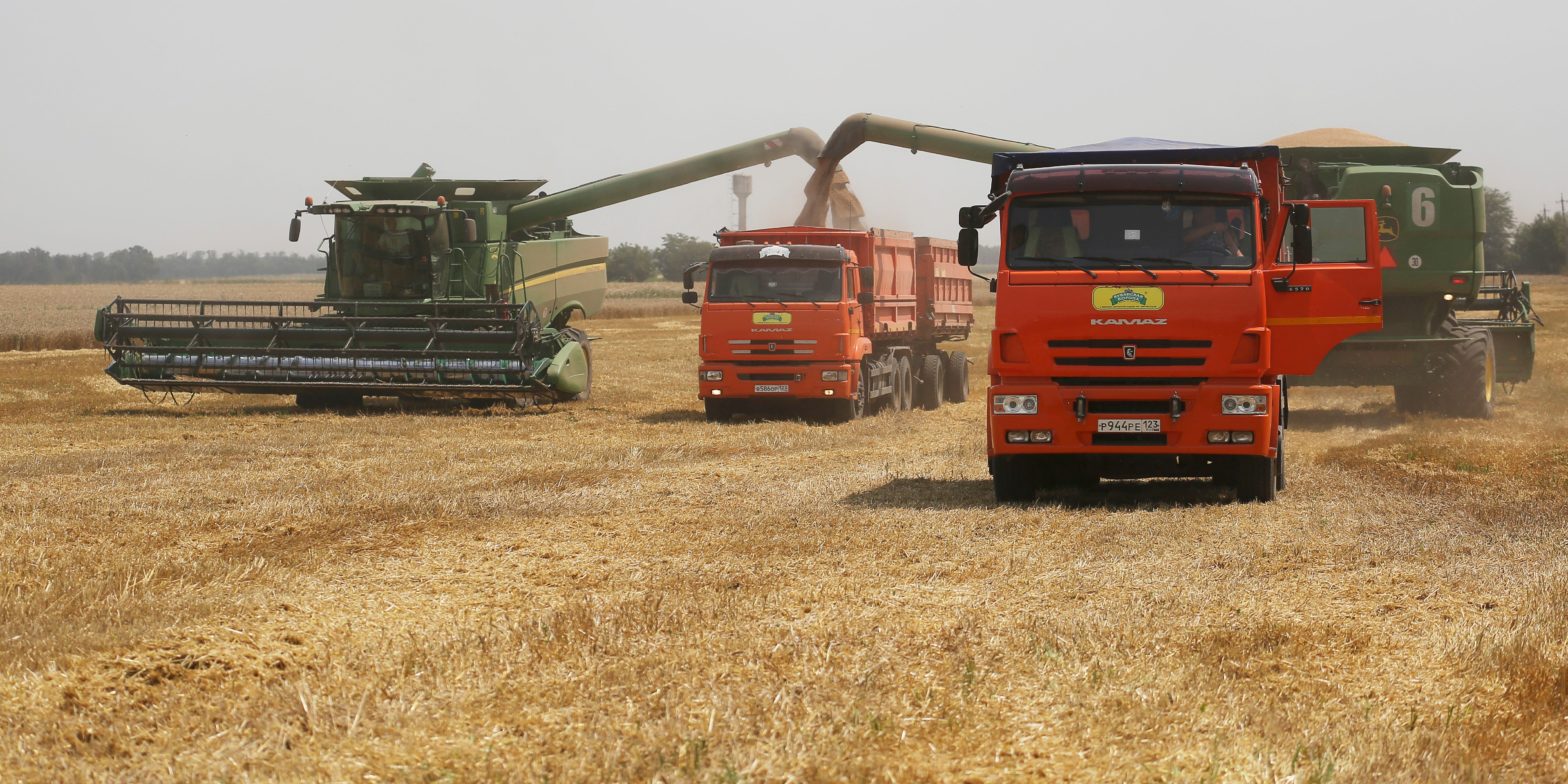Prices for oil, wheat and other commodities soared over the past week as Russia continued its invasion of Ukraine. Prices are surging as Russia is a top supplier of natural resources, including oil and coal. Oil prices have leapt toward $120 a barrel in an already hot inflationary environment. Loading Something is loading.
Russia’s standing as a top global producer of natural resources has propelled commodity prices sharply higher since its invasion of Ukraine, and analysts see little chance of a near-term slowdown.
In fact, commodity prices have seen their strongest start to any year since 1915, said Bank of America. In the past week alone, European natural gas more than doubled, wheat soared 40%, and oil prices surged over 20% as Western sanctions against Moscow took hold and traders turned skittish about doing business with Russian companies.
Here’s a look at rising prices for the key commodities.
Natural gas and coal
European natural gas futures. ICE Endex European natural gas prices shot up more than 100% in the past week, with front-month benchmark Dutch futures on Friday touching 204 euros ($223) per megawatt-hour.
Cold temperatures in the winters of 2020 and 2021 severely depleted natural gas inventories in Europe and Asia, and recent underinvestment in oil and gas production has meant there’s not been enough output to refill storage, said Quinn Kiley, managing director and senior portfolio manager at Tortoise, which oversees about $9 billion in assets focused on essential resources like energy and water.
“This is a long-building train wreck. And it’s not just one thing. It’s a series of underinvestment, a big trough because of the weather, and then a geopolitical situation on top of it,” he said.
The recent price surge has come despite the fact that sanctions haven’t targeted Russia’s energy exports, which are especially critical for Europe. Russia supplied around 45% of the European Union’s natural gas imports in 2021, according to the International Energy Agency, which recently outlined a 10-point plan for the EU to reduce its reliance on Russia within a year.
Coal prices have also been flying. Russia is the world’s third-largest coal producer and a key supplier to EU countries. European coal prices more than doubled this week to $436 per tonne before paring the gain toward $410 per tonne. But since utilities can switch between coal and natural gas to produce electricity, those commodity prices often move in tandem.
“The main driver here is the potential for disruptions in natural gas flows to Europe,” John Kartsonas, managing partner at Breakwave Advisors, told Insider.
He attributes about 70% of the movement in coal prices to natural gas and 30% to possible coal supply disruptions.
“The minute that you have a potential shortage of natural gas, all the utilities are going to switch to secure some type of an energy source. And the next available one is coal,” he said.
The futures markets for coal and natural gas are not pricing in any de-escalation in the Russia-Ukraine war, Kartsonas added. “When you look at energy prices in Europe, it’s difficult to see how we’re going to return back to normality anytime soon.”
Wheat
May wheat futures at CBOT. CME/TradingView Russia is the world’s largest wheat producer and combined with Ukraine, they produce about 30% of the world’s wheat. While Ukraine hasn’t been sanctioned, it halted commercial shipping from its ports after Russia invaded the country.
Prices for the commodity have leapt about 40% this past week to highs last seen in 2008. May wheat futures jumped to $12.09 a bushel during Friday’s session on the Chicago Mercantile Exchange.
“Bottom line, the market is trying to deal with the fact is that we’re pulling almost a third of global exports out of the equation,” Darin Newsom, president of Darin Newsom Analysis, told Insider. “And big buyers in the Middle East and other buyers around the world are scrambling trying to figure out where they’re going to get supplies of wheat.”
Highlighting disruption worries, two cargoes of wheat purchased by Egypt were stuck at Ukrainian ports, Reuters reported.
“Even if Putin pulls his troops out of Ukraine today, it’s going to take months to fix the infrastructure, to get the mines out of the Black Sea,” he said. “That’s too long to wait. That’s what the market is telling us.”
Oil
Brent oil prices. Markets Insider In a volatile week, Brent crude, the international benchmark, surged about 22% to top $119 a barrel. West Texas Intermediate crude gained about 24% to exceed $114 a barrel. Both hit 2008 highs.
Russia is the world’s second-largest oil producer, accounting for around 8% of global supply. The White House is considering a ban on Russian oil imports, reports said Friday.
But while sanctions imposed by Western countries, so far, haven’t explicitly hit energy exports, Russia has been struggling to find oil buyers as companies “self-sanction.”
And if Russian oil demand remains disrupted, JPMorgan sees crude prices soaring about 70% from current levels to $185 by the end of the year.
